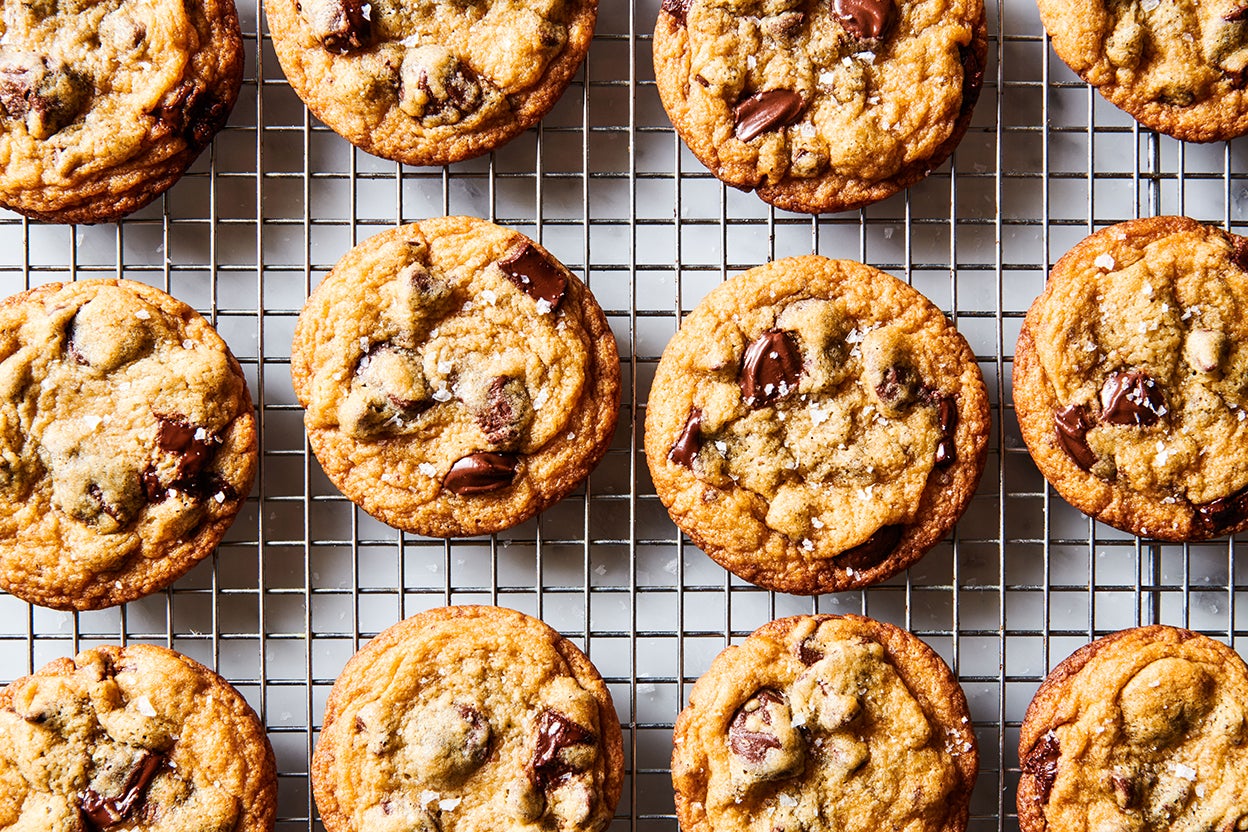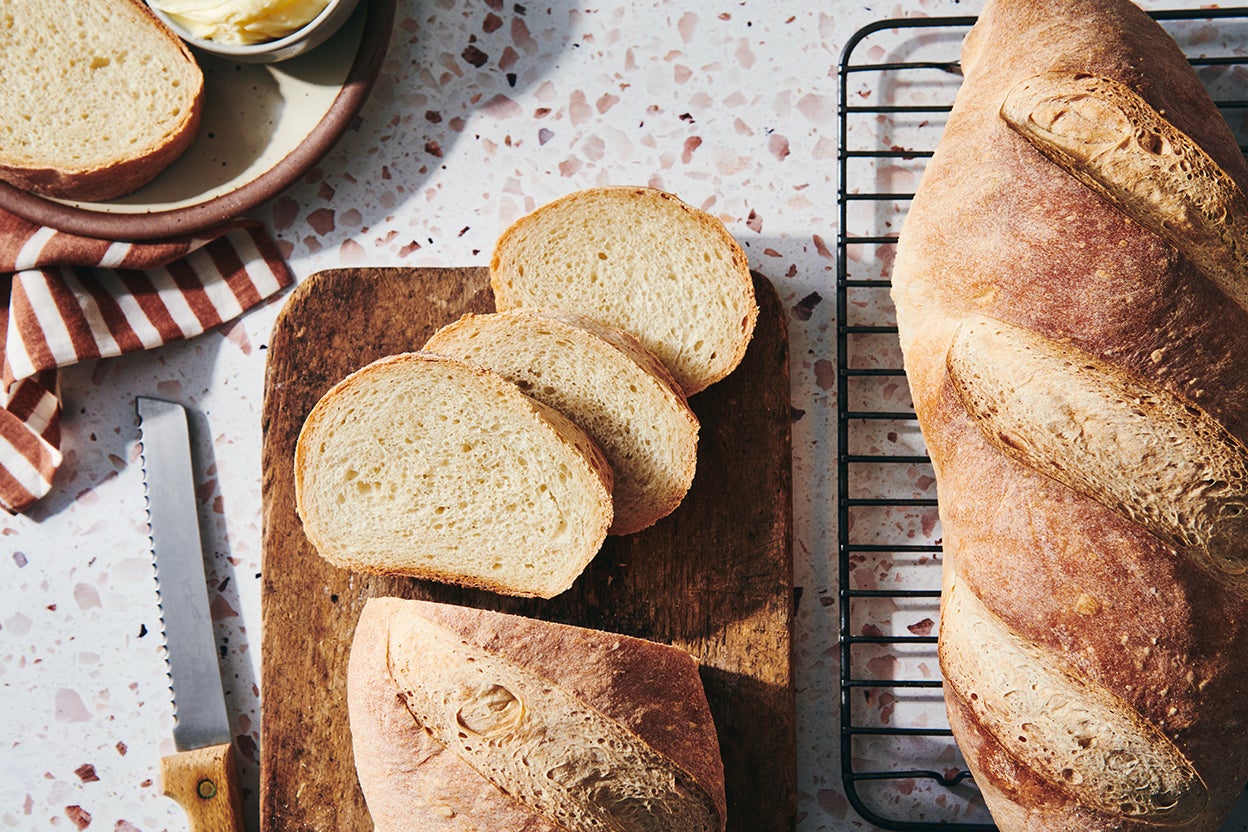


Salt. One word, four letters, and so many options.
Salt is salt, you might be thinking. Does it really matter what kind I use to bake?
Actually, it does.
The salt you use impacts the flavor of your baked goods, how some doughs behave, and even the way you measure. And with so many varieties, it’s critical to know the differences between each type, not to mention which one is meant for a specific recipe. For instance, if a recipe developer used Diamond Crystal kosher salt to test their recipe, but you choose Morton’s kosher instead, you might end up with a finished baked good way saltier than originally intended.
It’s a fine line between well-balanced and too salty. With the right information, you can avoid crossing that line as much as possible.

Standard-grain (table) salt: Small crystals that are uniformly sized, making it easy to measure consistently. This is the most common type of salt you’ll find.
Kosher salt: Larger, coarser crystals than table salt; this size is because the salt was originally designed for salting meat (thereby koshering it). There are two main brands of kosher salt you’ll encounter: Diamond Crystal and Morton’s. They are not the same. Morton’s flakes are bigger and denser than Diamond Crystal's. As a result, when measuring by volume Morton's is saltier than Diamond Crystal (and the two cannot be used interchangeably — unless you measure by weight).
Sea salt: This is basically a catch-all term for any salt harvested from salt water, and it can span multiple sizes, colors, and shapes. It's not great for baking because the salinity and crystal size are so irregular, so it’s difficult to use the appropriate measurement.
Flaky sea salt: These are large, crunchy flakes typically used for sprinkling on top of baked goods like brownies or chocolate chip cookies. It's not suitable for mixing into doughs and batters, as the huge flakes won’t dissolve or disperse evenly. One specific brand often referred to in recipes is Maldon.

Skim the pantry section of a baking cookbook and you’ll often see that authors refer to Diamond Crystal specifically as their salt of choice. They choose Diamond Crystal, they say, in part because it’s easy to pinch and sprinkle due to its size.
"I grew up on regular table salt, but Diamond Crystal is so much lighter and cleaner tasting," says recipe developer Samantha Seneviratne. "The flakes are big and light and they dissolve nicely. It's also the salt I use for all of my cooking, so why not use it in my baking too?"
"Since it has kind of a bigger granule, it doesn’t melt as quickly," explains Auzerais Bellamy of Blondery, who uses Diamond Crystal in her signature blondies and other baked goods. "So you do get that little pocket of salty flavor whenever you’re baking."
So is Diamond Crystal the be-all, end-all salt for baking?
Not at King Arthur.
Instead of Diamond Crystal, all King Arthur recipes are designed to use table salt. It’s the type most likely to be found in bakers’ pantries — plus table salt has smaller crystals than kosher salt, so it dissolves more evenly into baked goods for even seasoning.
"We’ve always felt that table salt provides more consistent results," says Charlotte Rutledge, who manages the King Arthur test kitchen. "You get a better dispersion of salt, no matter what the recipe is." The salty moments that kosher salt creates with its larger granules may be pleasing to some, but it can potentially lead to uneven seasoning.

If all you have is kosher salt, you may need to measure a little differently when baking any recipe developed for table salt, depending on the brand you're using. That’s because the various crystal sizes fit into a measuring spoon differently.
Measuring by volume: According to King Arthur's Ingredient Weight Chart, 1 tablespoon table salt is approximately equal to 1 tablespoon Morton’s kosher salt. If using Diamond Crystal kosher salt, double the amount of salt called for in the recipe.
Measuring by weight: No change needed — you can stick with the same gram measurements called for in the recipe regardless of which salt you choose.

In all baked goods, the correct amount of salt is essential for a final flavor that’s not too bland, not too salty, but just right.
However, salt plays an essential role in yeast bread that goes beyond just taste, which is why you should be extra certain to measure correctly when baking bread.
In addition to modifying flavor, salt controls the rate of yeast fermentation; strengthens gluten; and improves crust color. (For full details, see our previous post, Why is salt important in yeast bread?) If you don’t use enough, you could wind up with slack, floppy dough and a wan, pale crust. If you use too much, your dough could be stiff and difficult to knead, and it could take longer to rise.
Because of this critical role, it’s vital that you use the correct amount of salt when baking bread. Stick with weight measurements, if available, or consult the conversion recommendations above for King Arthur recipes. (Remember, our recipes are designed for table salt!)

Iodized salt is supplemented with potassium iodide or iodate in order to prevent iodine deficiencies. This addition gives it a slight chemical taste that can potentially be off-putting.
Instead, we recommend non-iodized salt for a clean, pure taste that won’t distract from the other flavors in your recipe. That said, feel free to use iodized salt if that’s all you have — the effect won’t be very noticeable, especially if you’re baking a recipe with strong flavors.
We only bake with table salt at King Arthur, but ultimately, salt can be a flexible choice. "Salt is obviously something people have very personal preferences about,” acknowledges Charlotte. “I don’t want to say people can’t use kosher salt in their baking, if that’s their preference."
Auzerais emphasizes the ingredient's importance, regardless of which type you ultimately choose: "Salt is necessary, I feel, in everything." She adds, "Just a tablespoon or a teaspoon or pinch, and you’ll really see the difference."
For more insight into ingredient choice and how to bake King Arthur recipes successfully, see our Recipe Success Guide.
Cover photo by John Sherman

